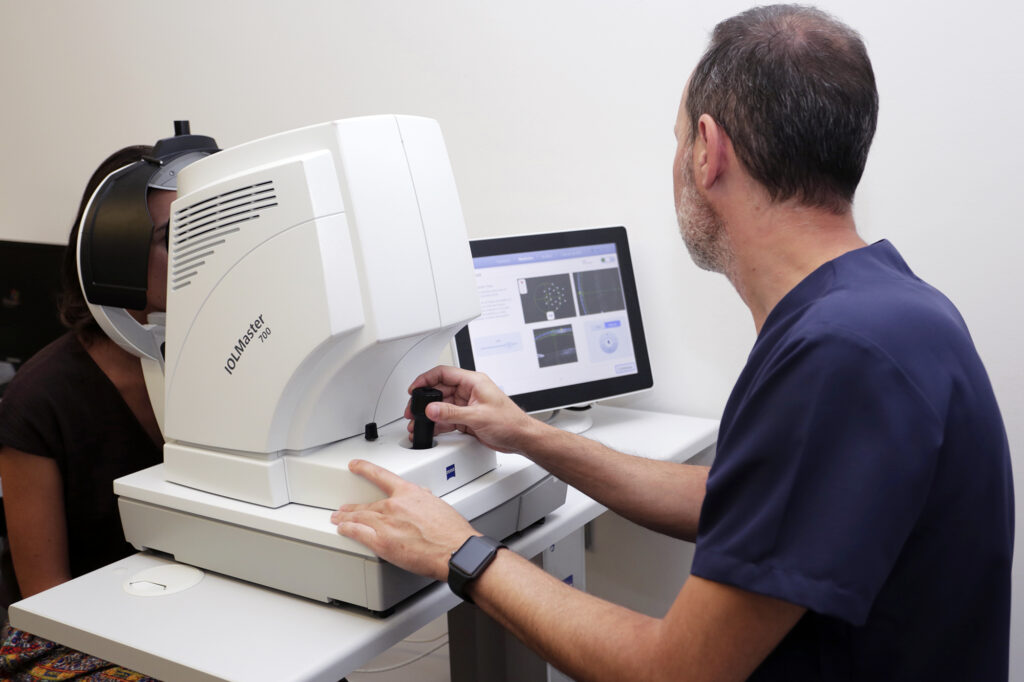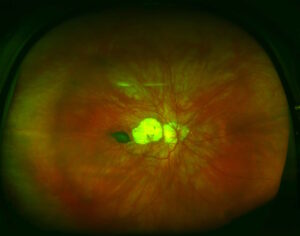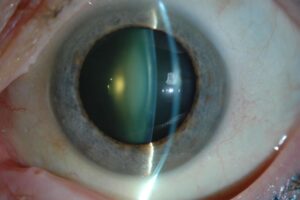Diagnostic tests
Biometrics

What is eye biometrics?
Ocular biometry is a diagnostic test we use to measure the anatomical dimensions of the eyeball with great accuracy and to know parameters such as its axial length (distance between the most anterior and posterior part of the eye) or the width of the anterior chamber (space between the cornea and the iris). It also allows us to know other measurements, such as the thickness of the lens or the curvature of the cornea.
There are two techniques with which we can perform an ocular biometry:
- Optical biometry: uses infrared light that passes through the eye structures to calculate the distances between them. It is the most widely used technique.
- Ultrasonic biometry: works with ultrasound, which has a greater penetration capacity than infrared light. We opt for this technique, which is more complex to perform, in cases where the cornea has lost its transparency, the lens is highly opaque or severe bleeding has occurred, which prevents the light from passing.
What do we use biometrics for?
Biometry is an essential test to determine the correct power of intraocular lenses, whether they are phakic (without replacement of the lens) or pseudophakic (with replacement of the lens). Based on the measurements obtained, the power of these lenses is calculated, customised for each patient who is about to undergo refractive or cataract surgery, depending on the characteristics of each eye and specific visual needs.
Moreover, biometry also helps us to control eye growth in high myopia, since, with more elongated eyeballs, the risk of having certain complications is greater.
How do we perform biometrics?
- If you use soft disposable lenses, you should not wear them in the week before your test. If you wear rigid or semi-rigid contact lenses, you should rest for at least 15 days.
- A biometry takes approximately 5 to 10 minutes.
- We perform it without having to dilate the pupil, so you will not see blurry when leaving the consulting room.
- In the case of optical biometry, we do not need to administer anaesthetic drops, as there is no contact with the eye. However, if we perform an ultrasonic biometry, we will apply them a few minutes before, so that you do not feel any discomfort when the biometer probe touches the eye surface.
- Although the ultrasonic technique is less common and requires more experience from the professional who performs it, at the Miranza clinics we have a team of optometrists specialising in both types of biometry.
- We get the results automatically to provide you with a quick, reliable and accurate diagnosis.

